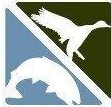Here is the joint press release issued today by the Puget Sound Rec Fish Advisory Board
Recreational Fishing Public Has Conservation as First Priority
Addressing Conservation
Without question, the very low abundance of Puget Sound wild coho and chinook stocks forecast for 2016 calls for fishery managers to employ all the tools available including, but not limited to catch-andrelease and selective fisheries that target hatchery origin fish, to minimize the impact of any fisheries that are ultimately implemented by the tribes and WDFW. Despite the early calls of some to respond to this crisis by closing all fisheries, there is little doubt that salmon fishing will occur this year and the impact of fishing will not be absolute zero.
Any fisheries that are ultimately implemented should be justified by the capability to target healthy and harvestable stocks, or species other than chinook and coho. In addition, because minor impacts on critical stocks can accumulate to significant levels, minimization of impacts from fisheries necessitates defining an upper limit to the total impact. For Puget Sound chinook stocks listed as threatened under the Endangered Species Act, such upper limits on impacts are defined by the tribal-WDFW agreed Puget Sound Chinook Harvest Management Plan. For Puget Sound wild coho stocks, guidance for state and tribal fishery managers for limiting impacts when critical status is forecast comes from the Comprehensive Coho Management Plan (CCMP).
Addressing five Puget Sound wild management units including Hood Canal, Strait of Juan de Fuca, Skagit, Stillaguamish and Snohomish, the CCMP describes an upper limit as a 10% exploitation rate in southern US fisheries. The tribes and WDFW can agree to modify that upper limit based on agreement. The recreational fishing community strongly supports this CCMP defined upper limit on 2016 fishery impacts and, considering the very low abundances predicted for other wild Puget Sound stocks that are not addressed by the CCMP (e.g., South Sound, Nooksack River), we suggest the same upper limit on impacts apply to all Puget Sound wild management units. A more conservative upper limit could be agreed upon – less than 10% - by agreement between the co-managers.
We urge WDFW to develop a set of recreational fisheries that will not exceed half the total impact limit (5%) and we expect tribal fisheries to be structured with a matching total impact limit.
Potential Recreational Fisheries
In recent years when the abundance and status of Puget Sound wild coho stocks was not critical, the total exploitation rate in non-Indian fisheries was approximately 10%, so a significant restructuring of our recreational fisheries will be needed in 2016. We recommend all recreational salmon fisheries in marine areas 5-13 be managed using mark-selective rules, with the possible exception of Hood Canal Area 12 given the predicted status for that management unit is not critical. Mark-selective hatchery targeting fisheries may not be feasible in some terminal area and river fisheries where hatchery production is low compared to wild production. Catch-and-release rules should be considered before total recreational fishing closure.
The recreational fishing community has been working with WDFW to develop a suite of Puget Sound chinook fisheries that maximize use of mark-selective fisheries that have a proven track record of success in providing meaningful recreational fishing opportunity and minimizing impacts on wild stocks. This is a responsible fishing proposal for 2016 that first considers conservation for individual wild stocks and also fairly shares fishing opportunities between the tribes and non-Indians consistent with secured Indian treaty fishing rights. The set of fisheries includes some opportunities that were not provided by agreement in 2015. It is the view of the recreational community that outcomes of negotiations from last year were not precedent-setting and that strong and reasonable arguments exist to support an alternative outcome to state-tribal negotiations in 2016.
Sampling and Monitoring Our Fisheries
It is the responsibility of fishery managers to collect information necessary to provide sufficiently accurate and precise estimates of the impact of our fisheries. Recreational salmon fisheries conducted in Puget Sound are the most intensively sampled fisheries on the Pacific coast. Sampling conducted each year for these recreational fisheries has included on-water as well as shore-based collection of data for making estimates of catch as well as of non-landed impacts. The recreational fishing community strongly supports continuation of these sampling programs. Unfortunately, in some cases, tribal fisheries are not sampled with on-water programs that would provide estimates of non-landed impacts. We encourage WDFW to work with the tribes to ensure that fisheries in 2016 are implemented with sampling programs that are documented and provide essential management information.
In-season monitoring of fisheries may be necessary for fisheries that pose an elevated risk for exceeding pre-season planned catches or impacts. Such risk may be determined by examining the history of meeting management objectives, such as the recent history of meeting the conservation objectives of the Puget Sound Chinook Harvest Management Plan. Recreational fisheries in Puget Sound have an excellent record of meeting these objectives and present low risk of failing to meet conservation obligations. Priority use of limited fishery management funds should be for supporting robust sampling programs rather than on intensive but unnecessary in-season monitoring of recreational fisheries.
The Negotiation Process
We urge WDFW to develop a potential recreational coho salmon fishing proposal reflecting the above stated recommendations and to share the results of that potential proposal with the recreational community prior to the scheduled March 29 meeting of the co-managers so that we may continue to have meaningful input to the negotiation process.
The potential outcome from a total closure of all salmon fishing in Puget Sound is currently being evaluated by the co-managers. Although we view total closure as unreasonable and not necessary to meet our co-management conservation obligations, that evaluation will provide a baseline for assessing the value and benefits of any fisheries that may be proposed or considered in future negotiation sessions
The Outdoor Line
EXPERT DRIVEN Hunting & Fishing Talk Radio - 710 AM
Sport Fishing Public's First Priority is Conservation!
6 posts
• Page 1 of 1
-

House - FYI
- Posts: 265
- Joined: Wed Apr 20, 2011 6:30 pm
Re: Sport Fishing Public's First Priority is Conservation!
Just finished reading your write-up regarding season setting and your (The Outdoor Line's) associated recommendations for areas 5-13. I'd be curious to hear the rationale for a selective fishery recommendation for "all recreational salmon fisheries" in Area 7 after the month of July. As I think you're aware, by mid-August we are pretty much fishing on Fraser River (BC) Chinook in A7. If a clipped only regulation was imposed up here, the ability to retain a king (it's only 1/day up here now) would pretty much go away during a pretty cool and prolific fishery that has little impact on US stocks. If the selective fishery was isolated to coho in Area 7 (how it has been with the exception of October), that would make more sense but to include Chinook in the equation is a whole different situation in my mind. I fully appreciate that I'm preaching to the choir here and the over-arching and genuine goal is to provided some semblance of a recreational fishery to the masses which I am in full support of. My concern however from a local Area 7 perspective is based on a global observation that lately , once we (Washington saltwater anglers) lose an allowance due to an adverse and anomalous year, we usually don't ever get it back. So to add that to the fact that we are primarily dealing with BC fish (unclipped) in August and September in A7 leads to some concern for me with the recommendation of going with a global marked selective designation. Just throwing it out there because I was curious to the logic of the recommendation specific to Area 7 this summer. Thanks for any thoughts you may have.
- Chinook5
- Pollywog
- Posts: 1
- Joined: Mon Mar 21, 2016 7:16 pm
Re: Sport Fishing Public's First Priority is Conservation!
Hey C5,
Welcome aboard and first off, this is not The Outdoor Line's position but rather the stakeholders of the Puget Sound Rec Fish Advisory Board which includes us and several other prominent area interests.
Your point on MA 7 is well taken and I share it with regard to harvesting unclipped Canadian chinook stocks in August and September. I believe this is an important, unique opportunity and I fully intend on supporting its inclusion in the final regulation package or List Of Agreed Fisheries.
Please remember that it is relatively early in the process and with meetings this Saturday in Mill Creek and March 30 in Lynnwood there is still ample opportunity to let your voice be heard as well.
North of Falcon 2016 will be remembered as one of the most challenging sessions. If the State and Co-managers truly work together in good faith, I sincerely believe we can construct a suite of fisheries that we all can look forward to and have a clean conservation conscience while we're at it!
Welcome aboard and first off, this is not The Outdoor Line's position but rather the stakeholders of the Puget Sound Rec Fish Advisory Board which includes us and several other prominent area interests.
Your point on MA 7 is well taken and I share it with regard to harvesting unclipped Canadian chinook stocks in August and September. I believe this is an important, unique opportunity and I fully intend on supporting its inclusion in the final regulation package or List Of Agreed Fisheries.
Please remember that it is relatively early in the process and with meetings this Saturday in Mill Creek and March 30 in Lynnwood there is still ample opportunity to let your voice be heard as well.
North of Falcon 2016 will be remembered as one of the most challenging sessions. If the State and Co-managers truly work together in good faith, I sincerely believe we can construct a suite of fisheries that we all can look forward to and have a clean conservation conscience while we're at it!
The Outdoor Line on 710 ESPN Seattle 6-9am Every Saturday!
-

Nelly - Spawned Out Boot
- Posts: 2261
- Joined: Tue Dec 28, 2010 9:04 am
Re: Sport Fishing Public's First Priority is Conservation!
Hey Nelly, I heard that possibly that Canada is considering fin clipping their hatchery fish too. I forget where I heard this from, but I think it would be great if they would do this! Could you reach out to your sources to see if they are going to be implementing this? Thanks! Personally, I agree that we should be able to harvest clipped or unclipped fish in area 7 during the summer.
- olympic
- Pollywog
- Posts: 57
- Joined: Thu Feb 21, 2013 9:05 am
Re: Sport Fishing Public's First Priority is Conservation!
I personally have not heard about a Canadian fin clipping push but that would have some interesting implications for MA 7 management! 

The Outdoor Line on 710 ESPN Seattle 6-9am Every Saturday!
-

Nelly - Spawned Out Boot
- Posts: 2261
- Joined: Tue Dec 28, 2010 9:04 am
Re: Sport Fishing Public's First Priority is Conservation!
All this could be for not....the state still has their emergency closure challenge flag in their pocket. Nelly is there any guidance the state uses to their decision for emergency closures?
If you are ever having issues with home financing or know of anyone having troubles with their home loan, please send them my way for an honest and transparent opinion.
Jeff Nance
NMLS# 405731
www.MyFinancePage.com
Jeff Nance
NMLS# 405731
www.MyFinancePage.com
-

Jeff Nance - Pecker Trout
- Posts: 128
- Joined: Tue Jul 19, 2011 8:02 pm
6 posts
• Page 1 of 1
Return to General Fishing Forum & Discussion
Who is online
Users browsing this forum: No registered users and 33 guests
